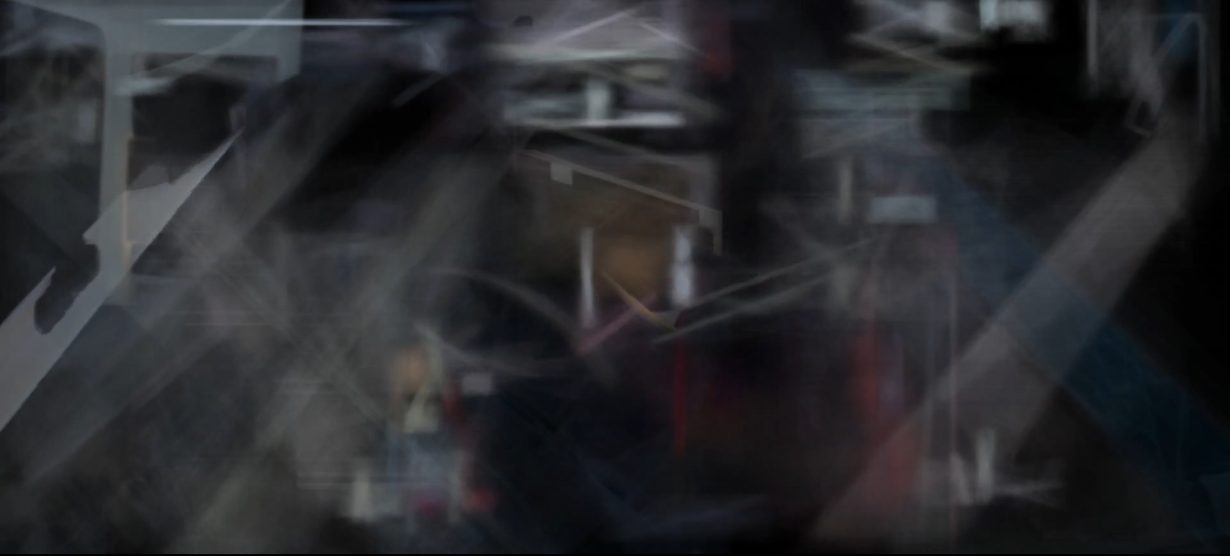At Leicester’s Phoenix, an AI reimagining of Stanley Kubrick’s classic sci-fi epic forces us to wonder what machines might learn from watching movies
Part of Leicester’s citywide Art-AI Festival 2021, Watching (2001: A Space Odyssey) (2018) is the first of two reworkings of classic sci-fi movies (the other being Ridley Scott’s 1982 Blade Runner) by media artist Ben Bogart. Bogart trained an artificial intelligence programme to ‘watch’ Stanley Kubrick’s 1968 space epic, breaking down frames and associated sound fragments. The AI then reconstructed the aggregated data into a full feature-length film through algorithms, using similarities in pixel size and colour.
Frames within frames are compounded, creating fuzzy unfocused scenes, as though they were themselves dreams of the original film. These frames quake and tremble, the visualisation of an active thought process of a seemingly sentient creature. White, structure-like lines are animated, unable to hold a static position, revealing attempts to build form through repetition, a process similar to learning. An astronaut’s helmet and the glowing red dot of the HAL 9000 onboard computer appear but they escape into vibrating, coloured shapes and pixels, sorted and filtered. The sound, like radio interference that needs tuning, ranges from high-pitched shrieks to the howling of wind to silence. Low garbles and indistinguishable mutterings are alarming, almost as if Bogart’s AI were talking to itself. It’s presenting an interpretation of the film, not a representation, and as the film proceeds things only get more unnerving.

Watching assesses the nature of cognition, reality, dreaming and the potential of artificial intelligence. By using 2001: A Space Odyssey Bogart plays on how familiar audiences are with the film’s iconic scenes (such as when the deranged HAL refuses to allow crewmember David Bowman back onto the Discovery One spacecraft). It raises questions about whether our knowledge processes are as objective as we might think. A viewer’s understanding of the work is based on knowledge of the original film – the only reference point for the artwork. But the ease with which we apply the film’s narrative to the artwork is precisely Bogart’s point. Our attempts at forming a narrative are destabilised by the visual an audio chaos. It forces the viewer to revaluate whether they are watching 2001: A Space Odyssey and to consider the software’s role in the interpretation of the film.

Bogart has programmed the AI to categorise, creating a version of our own passive yet efficient modes of cognition. Presenting a version of these processes back to us makes it appear as if the technology is actively learning, showing a vision what a machine’s ‘subconscious’ might look like. This spirals into wondering whether, after future iterations, Bogart’s technology might learn about the murderous AI HAL just from ‘watching’ 2001: A Space Odyssey, merging science fiction with real life. It forms a frightening yet intensely fascinating artwork that keeps you watching.
Ben Bogart’s Watching (2001: A Space Odyssey) is on view at Phoenix, Leicester, until 20 September. Watching (Blade Runner) runs 22 September – 18 October
This article is part of Remark, a new platform for art writing in the East Midlands by ArtReview in collaboration with BACKLIT. Read more here and sign up for the Remark newsletter here
